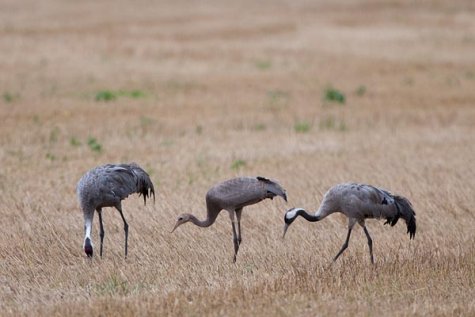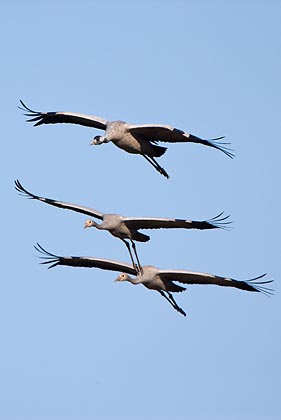Cranes seen and heard
Photos Arne Ader
Translation Liis
Crane family
Common crane Sookurg Grus grus
Gatherings of cranes could be seen already in August. The cranes breeding in Estonia gather into flocks; in September the passing migrants arrive.
The adults, with a grey plumage, have a red patch on the crown; a white band runs from the eyes to the neck, the beak is greenish brown. The primaries and the legs are black. The curly whisk of tail feathers of the adults are ornamental feathers.
Body length of adults is more than a metre, wing span 2 ½ metres and weight about 5-6 kilos. The juveniles are still visibly smaller than the adults, with a slightly lighter plumage, and brownish head feathers (see Arne’s photos).
The calls are loud and resounding, interspersed with the squeaks of the young of this year.
The crane is an ancient breeding bird in Estonia; there are about 7000 breeding pairs and the number is increasing, also a passing migrant, of whom there are tens of thousands.
Cranes fly in a ”crane triangle” formation where one leg usually is longer than the other. Estonia has more than thirty well-known staging areas for cranes on their autumn migration: the surroundings of Matsalu bay, western Estonia, also the Lahemaa area and eastern Estonia.
The menu of cranes includes berries as well as frogs and reptiles. The migrants forage on the large harvested fields, on spilled grain as well as on the mice that also feast there. Places for spending the night may be quite far from the daytime foraging areas.
Common cranes










